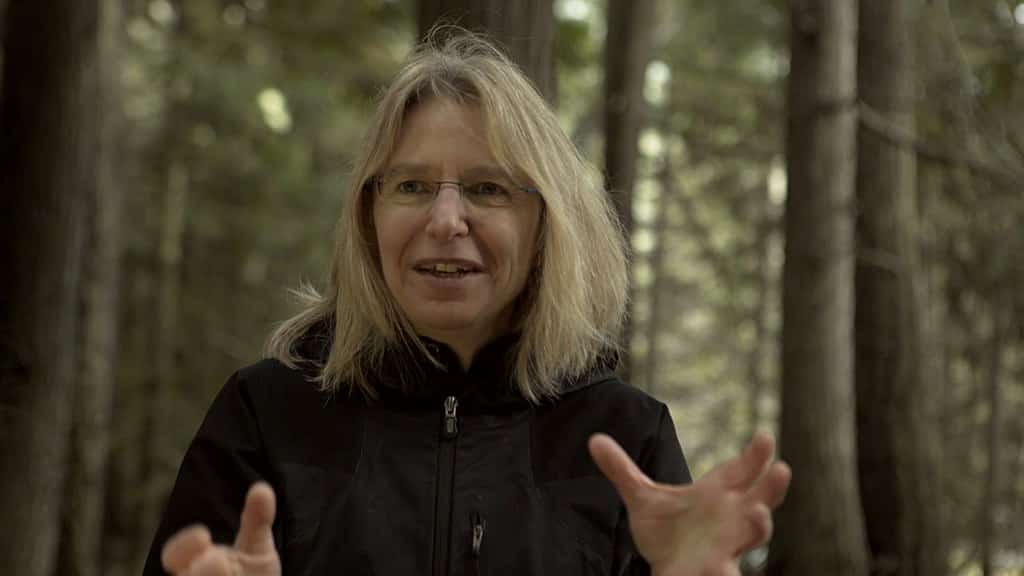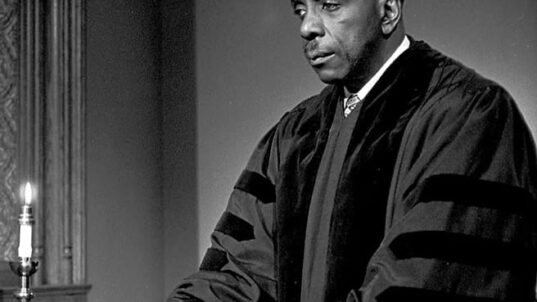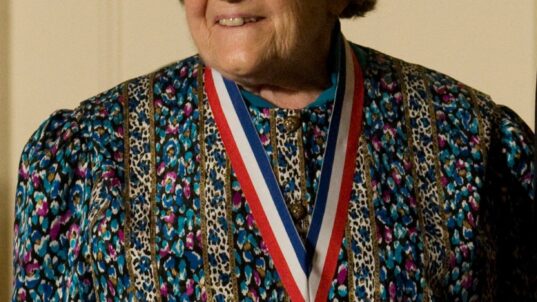
Suzanne Simard via Wikimedia Commons
Suzanne Simard grew up among old-growth forests in Canada and went on to study forestry. As a graduate student, she began to wonder why newly planted trees often failed to thrive after reforestation resulting from clear cutting. The newly planted trees had plenty of water, sunlight, and space. She suspected that the answer was in the soil. What she discovered changed how we view forests: trees have a social life.
Trees and fungi work together through the tree’s root system in what are called “mycorrhizal networks.” The fungi help the trees take in water and nutrients. In exchange, the fungi benefit from the sugars the trees produce. What Simard discovered is that the fungi threads link every tree in the forest. The older trees share carbon, water, and nutrients with younger trees. One tree will send alarms to other trees. When a tree is near its end, it will share its carbon with other trees.
Simard also discovered that trees of different species support each other. In fact, when reforestation happens with only one species of tree, the young trees fail to thrive. While the forestry industry might only be interested in growing Douglas fir, the firs only thrive when they grow with birch trees, a less commercially desirable species. The birch supply carbon to shaded fir trees and the firs supply carbon to the birch when the birch shed their leaves.
Simard’s discoveries challenge the Darwinian focus on interspecies competition by bringing to light the importance of interspecies cooperation. In fact, Simard found that cooperation among trees is crucial and that reciprocity and selflessness are vital for their survival. Her work suggests that to understand trees, we need to elevate our perspective from focusing on isolated individuals to considering the forest itself as a living being, itself composed of many different interconnected living beings.
It’s interesting to consider how Simard’s discoveries might lead to broader lessons about how we approach the world. Some questions we might consider:
- What if we shifted from our tendency to focus on competition among isolated individuals to a focus on living systems of cooperation?
- What can we learn from the interspecies cooperation required for reforestation to apply to our own intentional policy constructions (such as designing “planned communities”)?
- What lessons might we draw from the sharing that occurs within forests when we think of the value of human diversity or of the relationships between humans and the rest of the natural world?
- What might the selflessness and cooperation among trees suggest for thinking about our political and economic systems?
- How might the systems of protection that trees provide to each other relate to thinking about our own communities, locally and globally?
Just imagine what it would take to sustain the “fungi networks” in our communities. What if we practiced looking more deeply, to see the positive interrelationships and interdependencies beneath the surface of our society? What if we focused on the benefits of greater sharing among diverse populations? Just imagine what it would take to for us to help others when we sense impending harm or sense their need. Finally, just imagine if we shifted our common fixation on the competition of isolated individuals to a broader awareness of the interconnections that bind us across our many differences, including differences of species.
* * *
“What we are doing to the forests of the world is but a mirror reflection of what we are doing to ourselves and to one another.” – Chris Maser (ecologist and author)
This is part of our “Just Imagine” series of occasional posts, inviting you to join us in imagining positive possibilities for a citizen-centered democracy.



